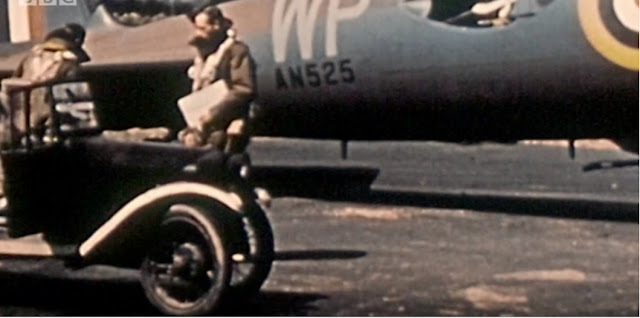"..On 8th September 1941 German fighters easily shot down two of the four Fortress Is of No. 90 Sqn RAF dispatched to bomb the German pocket battleship Admiral Scheer docked in Oslo, Norway. By September 1941 the British had lost, in combat and accidents, nearly half of their 20 B-17s. Somewhat disappointed, they relegated the remaining aircraft to Coastal Command for long-range patrols..."
The B-17 Flying Fortress was offered to the RAF early in 1941 and the first combat missions were flown during the summer of 1941. One of the first large-scale raids flown over the Continent was 'Operation Sunrise', a daylight raid mounted on 24 July 1941 against the German battle cruisers Prinz Eugen, Scharnhorst and Gneisenau holed up in the port of Brest in which three B-17s took part. The RAF's first B-17s were some twenty examples of the thirty eight B-17 Cs produced in the spring and early summer of 1941, designated Fortress I in RAF service. Forty RAF aircrew were trained at McChord Field, near Tacoma, Washington, from January-April 1941, before the aircraft was issued to No. 90 Squadron at Kinloss in Scotland. By 12 September 90 Squadron had carried out 22 raids, involving 39 Fortress sorties. Of those 18 had been aborted, two had bombed secondary targets and nineteen had bombed their primary targets. Only two 1,100 lb bombs were recorded as hitting their target. In that period two aircraft were shot down and two more crashed on landing after being badly damaged. One of their least successful raids was the attempt to find and bomb the heavy cruiser 'Admiral Scheer' anchored off Oslo, Norway on the morning of 8 September 1941.
The 90 Squadron machine WP-D/AN 525 "D-DOG" shot down on 8 September 1941 may well have been the first Fortress to come down in Europe
Crew: F/O David A A Romans (RAF)- P/O Frank Gordon Hart (RAF)- Sgt. John Brown (RAF)- Sgt. Peter Barnard Corbett (RAF)- Sgt. Robert Henry Beattie(RAF)- Sgt. Walter George Honey(RAF)- Sgt. Henry Merrill (RCAF). Their aircraft was downed by Jakobi and Steinicke of 13./JG 77 flying Bf 109 T-2 fighters although the congratulatory telegram from HQ see below) mentions Uffz. Karl-Heinz Woite (2./JG 77) as one of the successful pilots. Note the finish - the DG/DE/PRU blue scheme.
In all eight of the twenty aircraft were lost in two months and the Fortress was withdrawn from operations over Europe. The performance of the Fortress confirmed the RAF in its belief that no daylight bomber could operate safely against the German air defences. The Army Air Force pointed out that the RAF was using the aircraft above its designed operating height and was badly overloaded, reducing its performance. The high altitude caused some of the guns to freeze up. The Americans also pointed out that the RAF were operating the Fortress in tiny groups, sacrificing the perceived benefits of mutual defence. The RAF experience did prove that the B-17 could not fly high enough to avoid the German fighters – the Bf 109 E and Bf 109 F could both intercept the Fortress at 32,000 ft. The Flying Fortress remaining in RAF service in limited numbers throughout the war. The most important user of the aircraft was Coastal Command. No. 220 squadron took over the Fortress Is of No. 90 Squadron..
An account of 'Operation Sunrise', appears on this blog here.




